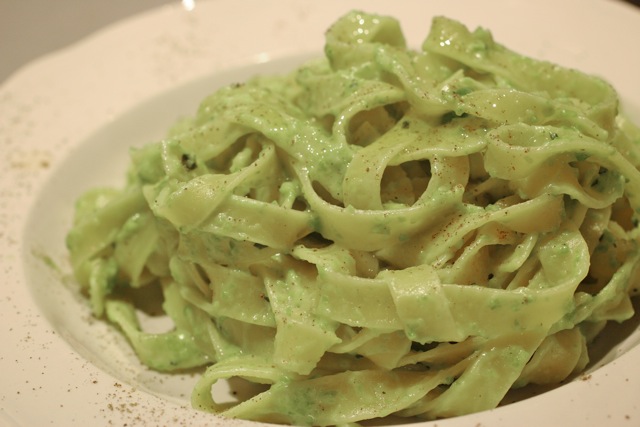
primary-image, l
(post, Judith Klinger)

primary-image, l
It's fava time in Italy, and pretty much everywhere else in the Northern Hemisphere. Italians are passionate about fave because it means spring has officially arrived when those giant pods show up in the market. Fave beans. How do I love thee? Let me count the ways. I love thee raw. I love thee in salads. I love thee paired with soft white cheeses. I love thee as 'maro'. And just to clear up any fava - fave confusion: fava is one fava bean, fave (fav-ay) is more than one fava bean. Italian is pluralized with an "i" or "e", depending on whether the noun is feminine or masculine. And there is your Italian lesson for today. I love thee raw. As I've learned, eating a pile of raw fava beans is an Italian spring tradition. Peel and eat, with a small pile of salt for dipping. I love thee in salads. If serving your guests a pile of raw beans pods doesn't make your heart go pitter-pat, try tossing them into a garden salad. I love thee paired with soft white cheeses. A small pile of warm, peeled fava beans with some melted soft, fresh young cheese is a little pile of spring indulgence. I love thee as maro`, a type of fava and mint pesto. Maro, Fava Pesto 1 pound or 1/2 kilo fresh fave beans 1 chunk of pecorino cheese, fairly fresh, not overly aged 4 cloves of garlic 8 mint leaves Olive oil, salt Shell the fave beans. This is somewhat labor intensive and has the potential of burning your fingers, but its still worth the trouble. Bring a medium size pot of water to boil. The pot should be big enough to fit a colander because you are going to steam the fave in their pods. This makes them easier to shell. Working in small batches, squish the fave out of its thick pod, then remove the tough outer shell of the fave, leaving only the bright green inner kernel. If the pods are too long to fit in the colander, snap them in half. While you are shelling the fave, place the unpeeled cloves of garlic in a small roasting dish and roast at 325F/165C for about 20 minutes. Which is about how long it takes to shell a pound of fave. Take your raw fave beans and place them in an overproof dish and toss with olive oil and a sprinkle of salt, let them roast for about 10 minutes. At this point, you can set the table, slice some prosciutto, take a sip of wine, but don't check your email, because it totally ruins the vibe. Once the fave have roasted a bit, add them to the blender, with the now peeled roasted garlic cloves, the mint leaves, the pecorino and another glug of olive oil. Puree until smooth. If you are totally feeling the ancient roots vibe of this recipe you could pound the ingredients smooth with a stone mortar and pestle, but I'll let you make the call on that one. Use a soft egg noodle pasta like fettucine, not a regular spaghetti pasta.. Its a very delicate sauce and it needs the gentler egg pasta and a wider noodle. Cook your pasta and toss with a few tablespoons of the maro` sauce. Serve with lots of fresh cracked pepper. A note on the cheese: it's really hard to find fresh, Italian style pecorino in the States. But an Italian chef friend of ours says that manchego makes a good substitute and its easy to find in the US. In case you have some leftover maro`, you could spread it on a cracker and be very happy munching away on this springy treat. Or you could try pairing it with baccala, which is what we did the other night. We sauteed a few pieces of baccala, laid it on top of room temperature maro` and finished it with a few fave beans and some lemon zest. I'm sure this would work well with any other dense meat white fish like fresh cod or halibut. This is the moment for fresh fave, so what are you waiting for? Add them to your market list and have some fun.